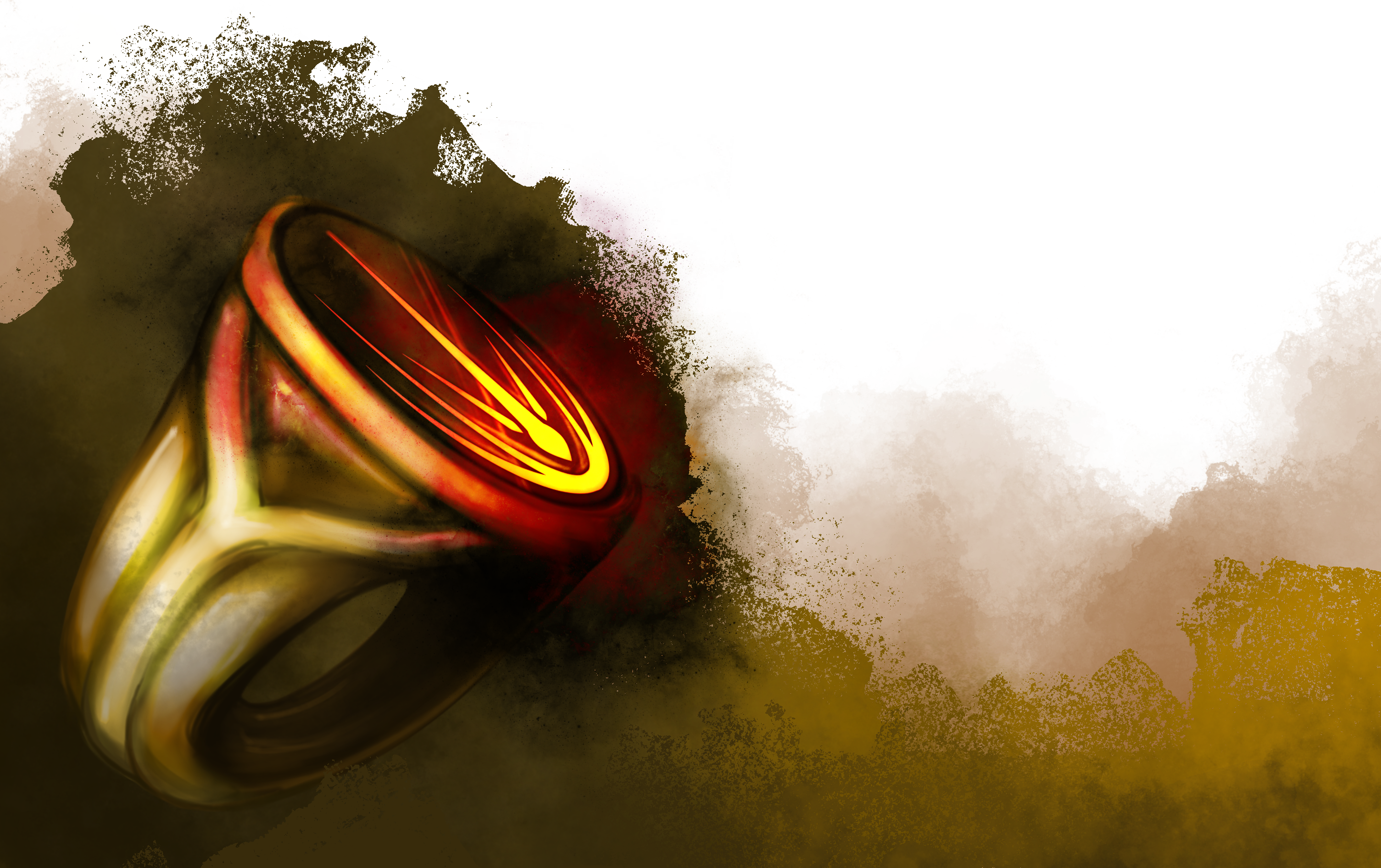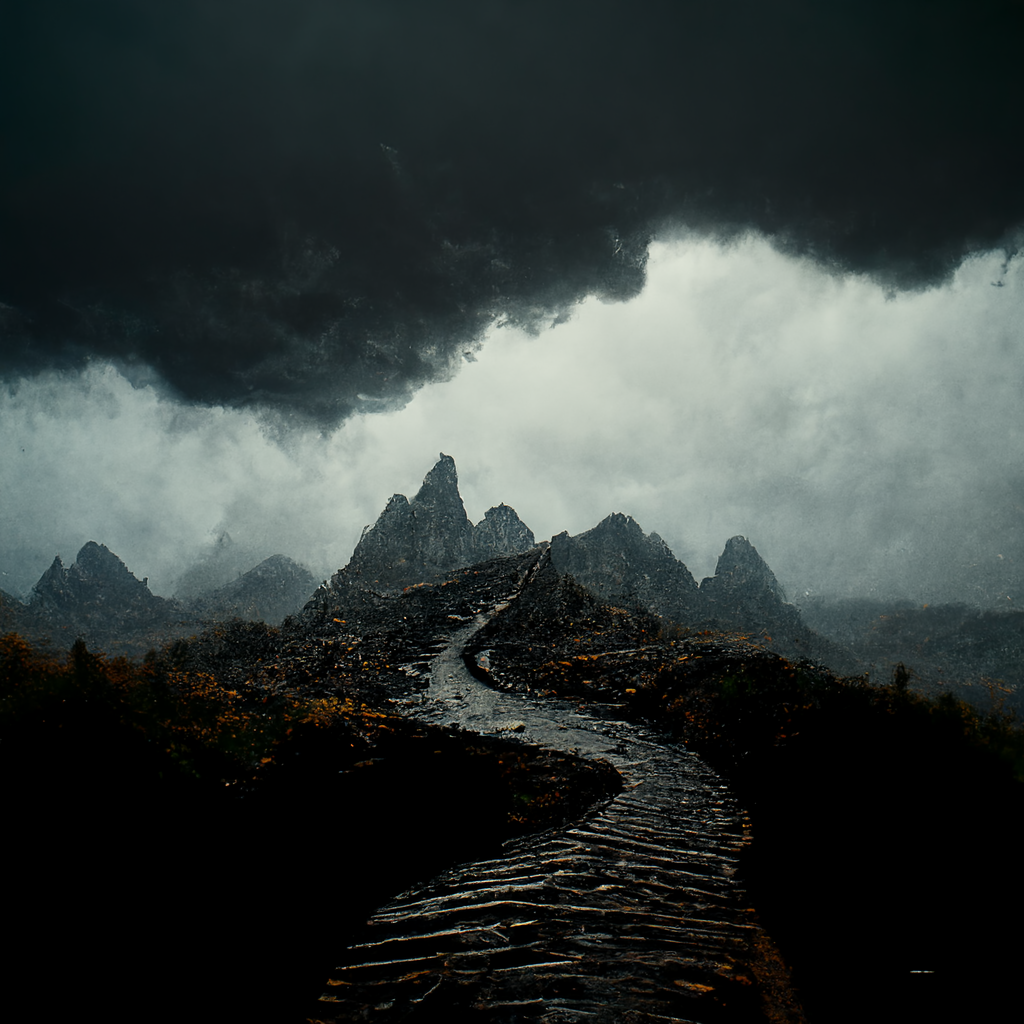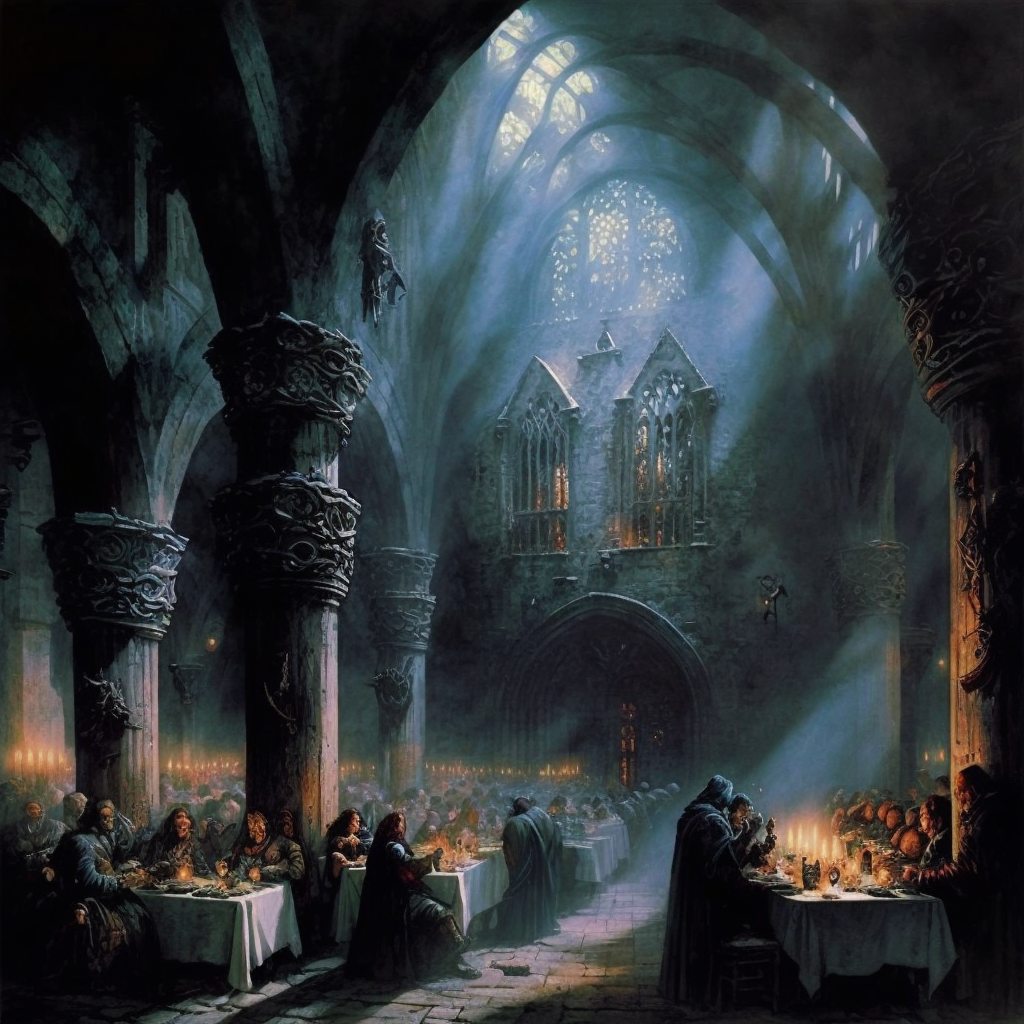Mordikhaan
Introduction
Mordikhaan is one of the most feared realms in @[Aes and it has presented a constant menace to its neighbours since its creation during the Sundering period. It is a vast mountainous expanse with jagged coastlines and dark shadowy forests, and has become a haven for every bandit, murderer, brigand and exile across the Aestis to find sanctuary in the service of its ruler, the Khul. The queen of Mordikhaan strikes terror into the hearts of the rulers of Aestis, even though she is barely seen, even in her own kingdom. No one quite knows her age or origins, but the histories of Mordei Morhannan show her waging wars against Wardenhal and Ghotharand and some accounts trace her emergence in Mordikhaan to a burning meteorite that crashed there fifty years before the Sundering. Rumours abound that she bears a terrible wound, almost cleaving her face in two, but somehow lives to rule her lands with an iron fist.History
Before the Sundering Mordikhaan was simply a vast mountainous region that hill tribes inhabited and empires like the Van and Arc largely ignored. Several fortified Vannic outposts in the mountains were built and their ruins still exist, close to the mines the Van dug for precious metals and stones. Periodically the Broek peoples of the region would raid the coastal Arclands and a small army would be dispatched to teach them a lesson. All this changed with the advent of the Khul. She established a mountain fortress city at the highest peak in the region called Kharis and drew to her the tribes of Mordikhaan and also countless mercenaries and adventurers from the Arclands and beyond. The Khul, set about establishing herself an army and created a monstrous guard of tortured humans called the Vrugg. These were prisoners and sometimes even infatuated volunteers who were burned alive in the Khul's fires, still in their armour. The magic of the Khul kept them alive and fused into their blackened chain and plate mail, and they now act as the giant shock troops of her regime. Mordikhaani spies and agents work throughout Aestis, attracting the naïve to serve their queen in Mordikhaan with promises of wealth. She has founded her own cult (see obsessionalism below), and likes her followers to worship her as a god.Society
Mordikhaan society is one in which brutality, violence and gangsterism prevail. At the top, in Kharis, is the Khul, who is largely indifferent to how the people she rules over behave. Few humans have ever laid eyes upon her and few have any desire to, as she is protected by four beings known as the Norns, aged blind hags that terrorise the Khul’s enemies with deafening shrieks. She leaves the day to day administration of Mordikhaan to her advisors, many of whom are unaware of each others orders. This network of advisors is referred to as the ‘black web’ and it has a high attrition rate as members of the web consistently conspire against one another to seek favour with the Khul. The Khul’s adminstrators, spies and generals try to exist as close the Kharis as possible, as this is the source of all political power in Mordikhaan, and also where living standards (conspicuously low across the country), are at least bearable. Life for ordinary Mordikhaani is significantly worse; not only do they have to brave the cold and endless rain of the realm, but also the dark terrors that crawl and walk through the heavy mist laden forests. Mordikhaan is not like the Arclands, where magic is barely heard of and monstrous creatures virtually unknown. Instead, the arrival of the Khul seems to have cursed the land and isolated communities live in constant fear of monsters. Some wonder whether the Khul herself invited the inhabitants of Damnation to make their home in the mortal realm. Villages and small towns in Mordikhaan have learned to build palisade walls and to mount a watch at nightfall. Humans across the vast country have come to terms with another feature of life in Mordikhaan; the existence of the Skabbakh. The Skabbakh are a race of shape shifting humanoids that manifest themselves as one of seven human ‘types’ when in disguise. When they shed their human appearance they have leathery brown skin stretched over lizard-like faces. The Skabbakh are mercenary warriors in the service of the Khul, their origins are a mystery to the people of Mordikhaan and a carefully guarded secret. There are many thousands of them and they make a large part of the Khul’s armies, but they also operate as mercenaries across Mordikhaan and beyond. They are duplicitous and cunning, but maintain a basic loyalty to one another or to whomever their comrades might be. Further afield, in every nation and city across Aestis, the Khul operates networks of spies and assassins. Each network is controlled by a secret spymaster known as a resident, who is ruthlessly loyal to Mordikhaan and will carry out the Khul’s orders to the letter.The Houses of Obsession
Across Mordikhaan are a series of former Aruhvian monasteries which have been seized by the cultist supporters of the Khul, the obsessionalists, and renamed the Houses of Obsession. The origins of Obsessionalism, the religion of the Khul, are far from clear, but its main philosophers revel in lies, misdirection and misleading others. They see this as one of the highest callings of their order. Even the origins of the Khul are far from clear, but the most compelling belief about the dark lady of Mordikhaan was that she came to the world of Hermia as a result of the Sundering, that she was one part of the consciousness of the Keeper that shattered and broke away. Some obsessionalists claim that she was the first fragment that broke away from the great god's mind and that in fact she caused the Sundering by commencing the disintegration of the Keeper. Other obsessionalists of course disagree as to present one coherent argument would be to fail in their duty to the Khul, which is to spread chaos. Xanter Yarax, the first obsessionalist and the architect of the faith, argued that obsessionalism was the truest form of Aruhvianism, pointing out that the Khul was the living embodiment of the Keeper's mind (or as close to it as could be achieved) in Aestis. He argued (no doubt disingenuously), that faith had to be misleading, to be complex and contradictory, because to believe in a god in spite of a clear and logical story was the greatest act of devotion. He argued that humans had no right to a simple narrative and they must strive to choose from thousands of competing stories, statements, arguments and ideas about the Khul. Within obsessionalism, there is no hierarchy of prophets or priests, all ideas are seen to be as valid as others, so few priests are venerated other than Yarax. The religion posits itself as a series of inconvenient truths about the nature of faith and knowing, but of course this is a fraud. The one thing that keeps obsessionalism together as a coherent set of beliefs is terror and those within the faith who can submit others to greater levels of control, fear, torment and torture are favoured by the Khul.Kharis (The Crag)
In the cold and misery of Mordikhaan, there is one source of warmth and shelter that most of the Khul’s servants are in two minds about visiting. Kharis, more commonly known as the Crag is a vast mountain complex that is the seat of the Khul’s power and her own throne room sits right at the heart of the mountain. The Khul’s throne rests on a circular platform that sits at the end of a long slender walkway which stretches over a vast chasm. Suspended deep in the dark below her are hundreds of scholar mages and others who have been consigned to cages in the dark and cold where they slowly go insane or starve to death. The Khul’s minions simply know that they are hanging in the dark to be on ‘listening duty’. Hidden in the alcoves above the Khul are stone caskets in which the Khul’s handmaidens, the Norns lie, awaiting her orders. For much of the time the throne room is empty and the Khul’s whereabouts is unknown, but her presence is always felt and her bodyguard, the Silent Legion is present across the Crag. The mountain serves as more than just a throne room for the queen; it is also a vast arsenal and garrison for the elite of her forces. At the foot of the mountain, the town of Tekund has developed, offering the Mordikhaani troops at the queen’s command everything that armies require.
Field of Chains
Kept in caverns below the Crag are the prisoners of the Khul, men and women who have been captured in war and conquest who are chained together and used as slaves. All are mutilated, missing eyes, hands and tongues and most pray for death. Those condemned to the field of chains are forced on exhausting marches in front of the Khul’s armies when they advance against their enemies. The suffering of the Khul’s prisoners is displayed to enemies to show what will happen to them when they are defeated and to taunt them. Some opposing soldiers can see former comrades and loved ones staggering in the field of chains as they ready themselves for battle.Ragrim
Ragrim can be reached from Kharis by river and it is the great military stronghold of the Khul. Armies that are marshalled together for invasion to the South (Wardenhal, Firg, the Mill Lands) and garrisoned here. Ragrim is a collection of huge hill forts with roads connecting them to a series of river ports where the Khul’s fleet is moored. It is at Ragrim that the Khul’s shocktroops, Skabbakh mercenaries from the Black Republics live in vast caverns under the hills. They mingle with her human subjects and form a terrifying fighting force that constantly presents the rest of western Aestis with the threat of invasion. In the last two years, troop numbers have grown at Ragrim, suggesting that the Khul is planning her next war somewhere in Western Aestis or the Arclands again.Deurikh
Deurikh is the most secretive place in Mordikhaan. It is where the Khul first established her power, and there is a vast meteor crater where legend has it, she first arrived in the mortal realm. An imposing fortress rises from the mountainside above the crater, now a lake, and it is where the Khul spends a large part of her time when she is away from the Crag. Do you want more lore? Get weekly updates on World Anvil and the Arclands Blog straight to your email inbox, PLUS our list of fifty mysterious trinkets to delight and enchant your adventuring party. Get your copy here.A Fire in the Heart of Knowing
Our debut Arclands novel is available here. Read A Fire In the Heart of Knowing, a story of desperate power struggles and a battle for survival in the dark lands of Mordikhaan.Ten items you might find in a Mordikhaani Prison
Mordikhaan is a huge, anarchic country ruled by the enigmatic and feared leader, The Khul. She has created a society where survival is possible only through steadfast devotion to her rule and where endless backstabbing and ruthless competition abound. A player character living in Mordikhaan might well end up in one of the country’s countless prisons and ‘blood monasteries’ - former houses of worship that have been converted into torture centres by Mordikhaan’s queen. They might find themselves of Ogathraz, the Khul’s mountaintop prison fortress, where hunger and cold claim as many lives as the jailer’s lash.
The Krivian Tomes
Mordikhaan has a religion of sorts, known as Obsessionalism. It is a cult that seeks to destroy the truth, rather than to enlighten others and its founding texts are known as The Krivian Tomes, a set of dozens of slim, crimson volumes that are dizzying in their complexity. They are purposefully written to cause confusion, chaos, discord and to spread lies and half truths about the nature of reality and the five dimensions; anyone who reads them either finds them incomprehensible, or even worse, starts to understand and then believe what the original Krivian Acolytes wrote.Gripping Flail
Mordikhaani jailers have little interest where items originate from, as long as they are effective in causing pain and suffering. The gripping flail is an item that originates from the Damnation, and was originally brought into the Mortal Realm by the shape shifting Skabbakh. The flail’s whips are embedded with hundreds of tiny metal ‘teeth’ and they cause extra damage by wrapping themselves around limbs and other parts of the body. The flail clings to its victims and the torturer can inflict an extra point of damage per round as they pull it backwards.Buzsulg Grubs
These small and revolting creatures are related to the Zsulg, a subterranean mass of tentacles and fangs, which is drawn to magic energy. The Buzsulg Grub simply prefers flesh and will burrow into the ear of its victim and attach itself using a sticky fluid that burns through the skull to the base of the brain. There, it will control the individual, slowly eroding their ability for autonomous action, unless it is burned out with a hot iron.Enchanted chalk
One inmate fortunate enough to receive a visitor is given a box of chalks, ostensibly to draw with to stave off the boredom and despair. When the user draws on the walls of their cell, their drawing becomes animated and grows to fill the entire wall, becoming a terrifying version of the simple sketch the user made. It will then talk to the user’s enemies or persecutors, threatening them and promising to reveal their innermost secrets to their friends.Norn Mask
The Khul’s most deadly helpers are the four vile hags she keeps at her fortress Kharis, known as the Norns. In order not to be consumed by horror and madness when looking upon these hideous entities, an enchanted iron face mask must be worn, which offers protection against magical fear.Alotrican Ring
The Alotricans are a secret society even within Mordikhaan, they are the followers of Altrares Alotric, the first of the Khul’s great spymasters and chief advisors, who was able to influence events across the continent. His followers wore an iron ring engraved with the symbol of the rat, with two small garnet stones for eyes. The Alotrican Ring is only worn openly by a small number of powerful Mordikhanni; other less powerful members of the Alotricans keep their affiliation secret as they seek to avoid the resentment of their fellows. Alotricans have far better living conditions than other Mordikhaani and see other subjects of the Khul as being expendable.Map of the prison
Not all of the Khul’s prisoners have been completely broken mentally and physically. Some still yearn for freedom and long to escape, and have spent many solitary hours creating a map of the tunnels and passages in the great icy fortress from memory. This map is created from droplets of the prisoner’s blood, though whoever the prisoner was, the blood itself has extraordinary properties. When the command work ‘Nuhkai’ is spoken, the blood vanishes back into the cloth it has stained and the map disappears.Gem that captures the madman’s wail
The Khul enjoys capturing the intangible, and in her realm, nothing is more fleeting and transient than pain. She created a series of stones, the Okhata, or ‘pain stones’ gems which capture the horrors of torture. Some, when activated using a power word emit the screams of the tortured, others reflect scenes of mutilation in the gemstone’s facets.Bottle of liquor that you’d have to be insane to drink
Never drink anything that is served in a Mordikhaani prison, especially the alcohol. The jailers and torturers make the most horrific spirits in the Outer Kingdoms in order to stave off the misery of their own existences in the Khul’s terror empire. Normally they pass around a revolting sour black liquid distilled from mushrooms called ‘zeet’, which results in feverish hallucinations and is what passes for entertainment at OgathrazFalcrex - the executioners sword
Falcrex is not a blade from the Mortal Realm, it is a sword that was forged in Damnation and is not traditionally used for slicing through mortal necks (though this is the use to which it has been put by the head executioner, Razan Varid). It was originally the execution sword of the Prassus, the go betweens of Damnation. It resembles a bastard sword and its blade, when held by a wielder sufficiently merciless to be worthy of its malice, emits flecks of glowing red energy.
Type
National Territory






Comments